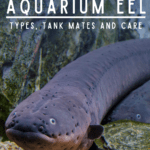Most aquarium hobbyists keep a range of popular freshwater or marine fishes and invertebrates. But in recent years, there’s a new and exciting kid on the block in the world of fishkeeping: freshwater aquarium eels.
The freshwater eel is a fascinating animal that is increasingly finding a place in many home aquariums around the world. There are many different types of eels, some of which aren’t eels at all, but fish. Eels come in different sizes, from the small 11-inch Peacock eel right through to the enormous 8-foot electric eel that might suit you if you’re an experienced fish keeper with a very large aquarium.
This guide tells you everything you need to know about looking after the mysterious freshwater aquarium eel.
Freshwater Aquarium Eel – Overview
Common Name (species)
Freshwater aquarium eels
Care Level
Intermediate to advanced
Diet
Carnivore; shrimp, crabs, small feeder fish, frozen foods, flakes
Activity
Nocturnal, some species are burrowers
Temperament
Semi-aggressive but species-dependent
Tank Level
Primarily bottom-dwellers
Min Tank Size
30-gallon
Temperature Range
Tropical 72-82°F
Compatibility
Some species can be housed together but unsuitable for a tank with small fish species, invertebrates, and amphibians that will be regarded as a food source.
Type Of Freshwater Eels
Here are nine freshwater eel species that can make exciting pets for experienced hobbyists.
1. Electric Eel (Electrophorus electricus)
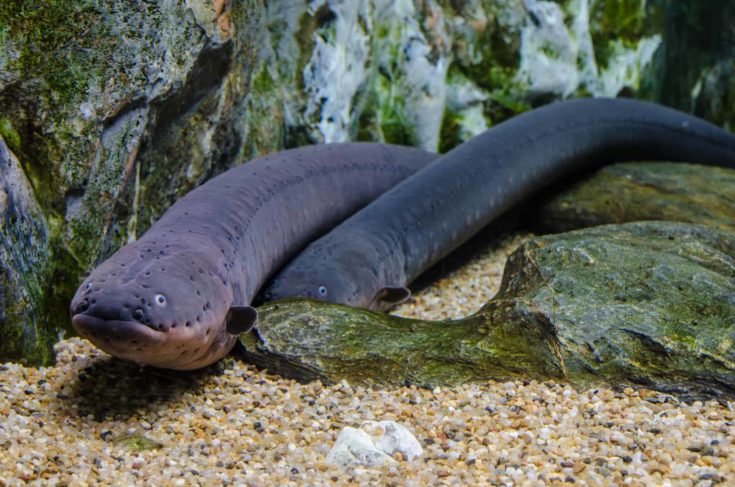
The famous Electric eel is well-known for its ability to generate an electrical pulse that it uses as a weapon and as a tool for tracking fast-moving prey. If you take on one of these intimidating creatures, you will need to handle your pet with extreme care, as these animals can produce at least 500 volts of electricity!
If you’re brave enough to keep an Electric eel, you will need an aquarium of at least 200 gallons, as these animals grow to a minimum of eight feet in length.
2. Peacock Eel (Macrognathus siamensis)
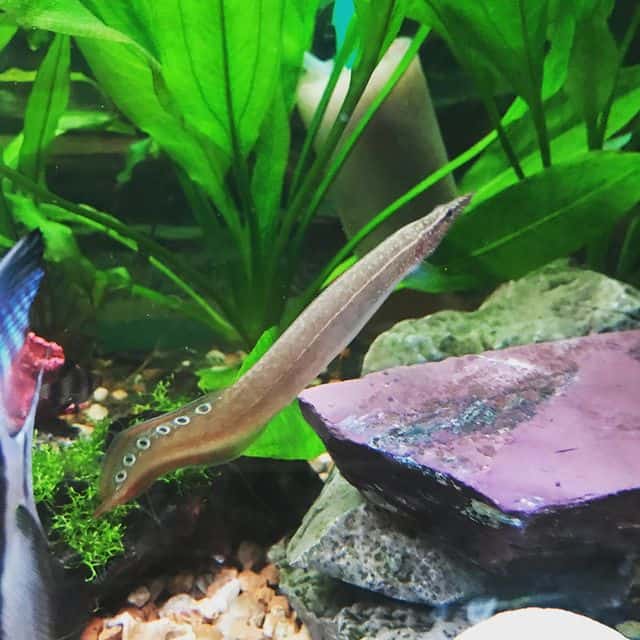
The Peacock eel is a smaller species of spiny eel, growing to around 11 inches long and comfortable in a 35-gallon tank.
In nature, the Peacock eel lives in still waters and flooded fields and is found in abundant numbers across Asia. These handsome animals vary in color and pattern, depending on where they come from, but all specimens have three to six decorative “eye spots” along the dorsal fin’s base on the eel’s rear back. Hence the creature’s common name, Peacock eel.
3. Zig-Zag Eel (Mastacembelus armatus)
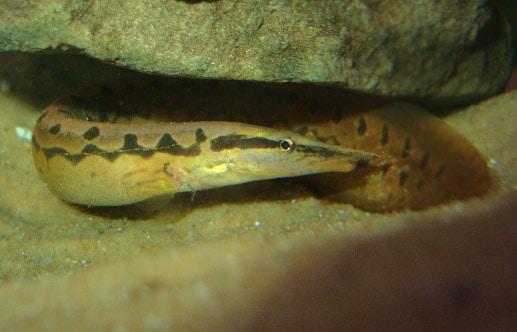
The Zig-Zag eel looks similar to the Tire Track eel, and the two species are often confused, although the Zig-Zag eel is the larger of the two. I recommend that you check carefully to make sure you know what species you’re taking home, as there’s quite a difference in size between the two.
The Zig-Zag eel is a spectacular looking spiny eel that grows to measure a huge 35 inches long, so you will need a big tank to house one. However, your efforts will be rewarded by the eel’s 18-year lifespan.
4. Black Spotted Eel (Mastacembelus dayi)
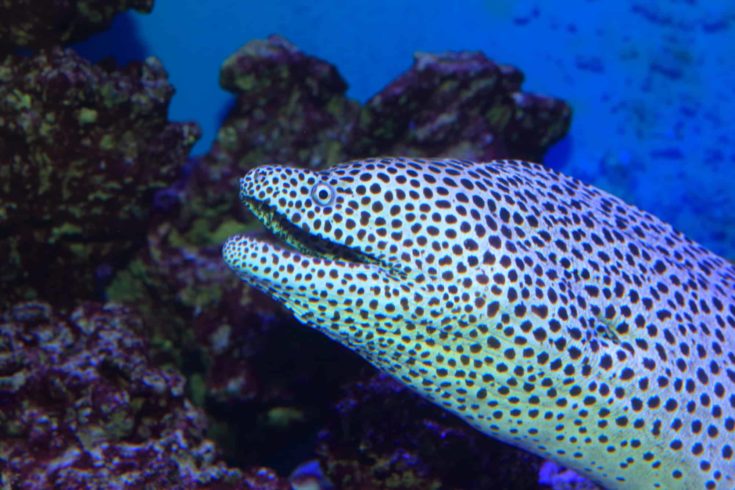
The Black Spotted eel is another species of Spiny eel that’s often mistaken for the Tire Track and Zig-Zag eel as a juvenile. However, when the Black Spotted eel matures, it has a black spotted pattern across its body, hence this attractive eel’s other common names of Spotted Spiny eel and Polka Dot eel.
The Black Spotted eel grows to measure 20 inches long and has a lifespan of around 18 years.
5. Half-Banded Spiny Eel (Macrognathus circumcinctus)
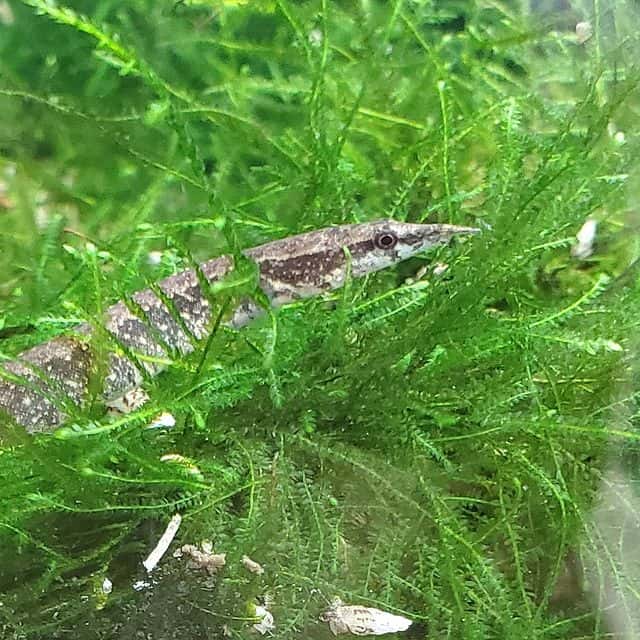
The Half-Banded Spiny eel is one of the smaller species of spiny eels, growing to measure just short of eight inches in length. You can keep one of these handsome eels in a 35-gallon tank, but you must make sure that your eel habitat has a tightly fitting lid or cover slide, as these slippery characters are accomplished escape artists.
These solitary, nocturnal eels are found across Asia, inhabiting rivers and streams where the vegetation is dense and migrating during the dry season to floodplains and canals.
6. Asian Swamp Eel (Monopterus albus)
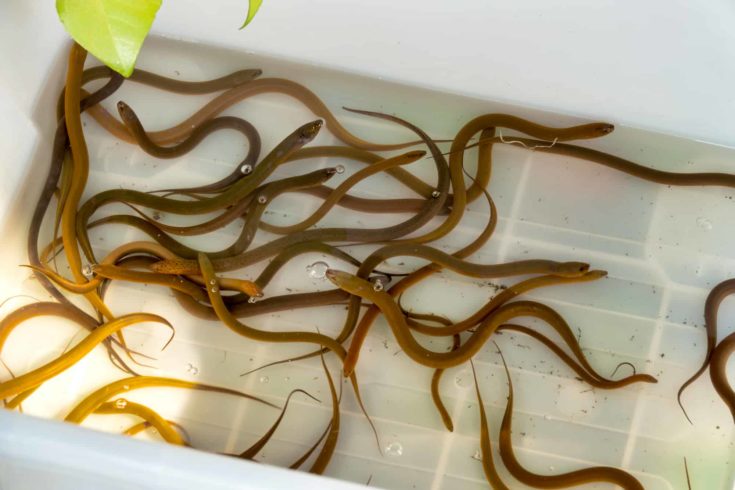
The Asian Swamp eel came to the U.S. as a cheap source of food. The eels were raised in fish farms, but many escaped into the waterways, and they are now regarded as an invasive species in Florida and other coastal regions.
Asian Swamp eels grow to a couple of feet in length and need a tank large enough to allow them to stretch out fully. These are very aggressive creatures that must be kept singly and may take a chunk out their keeper’s fingers too, so proceed with caution!
7. Pink Paddletail Eel (Moringua raitaborua)
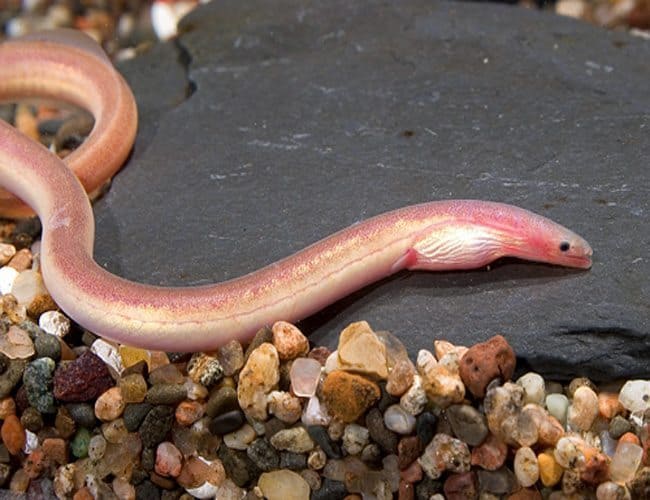
The colorful Pink Paddletail eel is also sold as the Purple Spaghetti eel. This is a rare species of eel in the hobby and is a very shy creature, spending much of its life buried in the substrate.
This species of eel is a “true eel,” belonging to the Moringuidae family of spaghetti or worm eels. Pink Paddletail eels are carnivorous, but they are generally not a threat to larger fish species in a community tank thanks to their very small head and mouth.
8. African Spiny Eel (Mastacembelus vanderwaali)
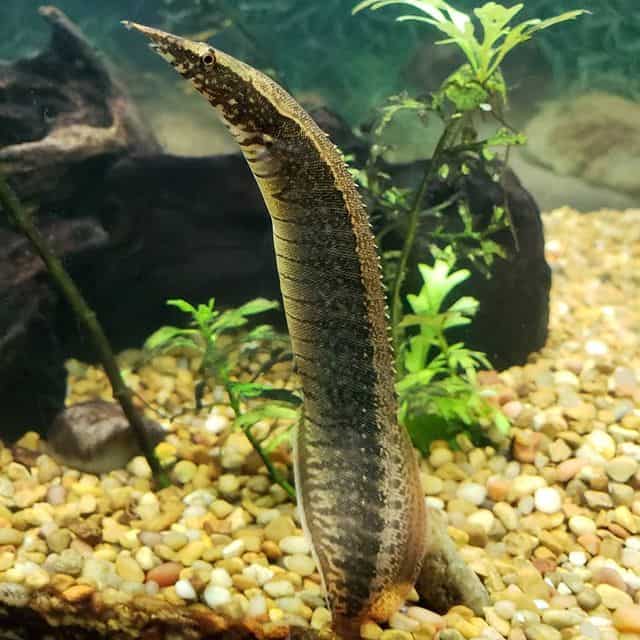
The African Spiny eel is also known as the Ocellated Spiny eel. These eels are quite small, reaching around 12 inches in nature, but only growing to six inches in captivity, making them a good choice for a smaller tank.
These eels are quite shy, spending much of their time hiding away. Although the African Spiny eel is usually fine with most tankmates of a similar size, they don’t get along with others of their own species and will fight.
9. Fire Eel (Mastacembelus erythrotaenia)
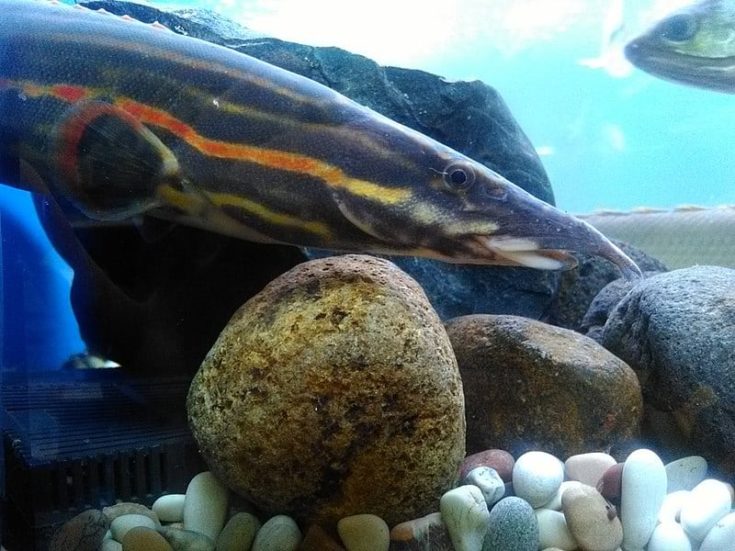
Although Fire eels do resemble true eels with their snake-like bodies and pointed snouts, these creatures are actually a species of fish.
Fire eels come from Southeast Asia, where they are found living in lakes and slow-flowing, muddy rivers. Fire eels spend much of their time buried in the substrate, coming out at night to feed.
You’ll need to take care when cleaning your eel’s tank, as these fish have spines that produce a toxic slime.
Activity Level/Temperament
Eels are generally nocturnal, inhabiting the lower areas of the aquarium. Some species, such as Tire Track, Zig-Zag, and Fire eels, spend much of their time buried under the substrate with their heads poking out or hiding among the plants.
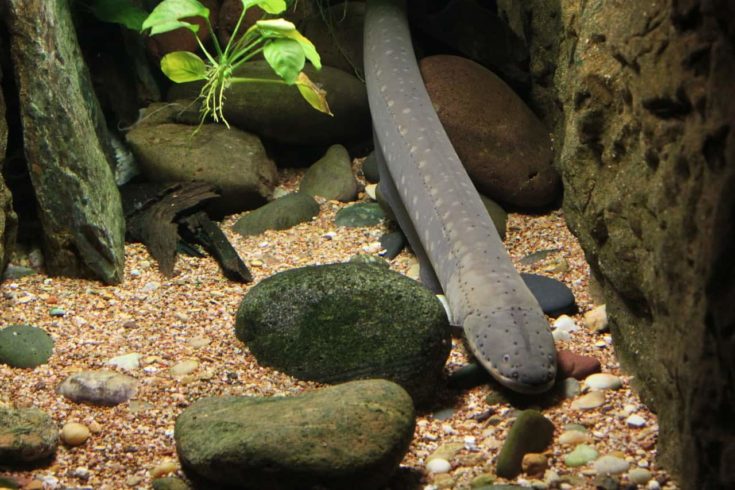
Many species of freshwater aquarium eels get to recognize their owners, learning when it’s feeding time, and even coming out to wait for their food. Some eels have even been reported as taking food from their owner’s hand!
Some species can breathe air and regularly visit the water surface to breathe.
Compatibility And Tankmates
With one or two notable exceptions, eels are generally peaceful animals when kept in a species only tank or in a community aquarium that features large fish species that won’t be viewed as food by the eels.
However, eels are carnivorous predators that cannot safely be kept with small fish, crustaceans, amphibians, or mollusks that will most likely end up on the menu.
Single-species Option
Unfortunately, some eel species do not mix happily together once they reach adulthood. Also, thanks to the large size of some of the species, the size of an aquarium you would need to house more than one specimen would simply be too big to be practical in most homes.
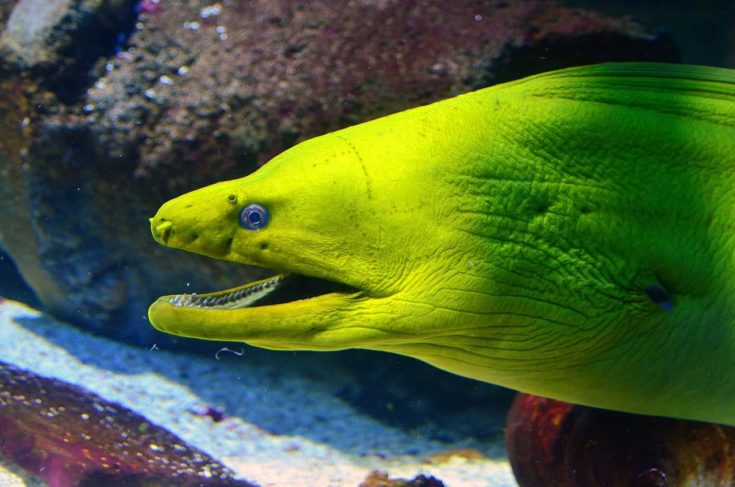
Before you decide to keep more than one eel, always research the species thoroughly first to check how big the animal will be when fully grown and its compatibility with others.
Feeding
Freshwater aquarium eels are carnivorous, and they’re actually fairly straightforward to feed.
What To Feed Your Freshwater Aquarium Eels
In nature, freshwater eels eat crabs, shrimp, amphibians, and fish that are small enough for the eel to swallow. Generally, the larger the eel, the larger the prey it can take. So, bear that in mind if you’re going to keep your eel in a community tank.
Aquarium-kept eels can be fed live foods, such as shrimp, feeder fish, and Thai micro-crabs. Eels will also take frozen meaty foods, but be sure to thaw the food first in a small amount of tank water. Sinking pellets that are formulated for carnivorous fish and eels can be fed, too, as a supplement to the eels’ staple meaty diet. Fresh fish can make a protein-packed addition to the menu.
To add variety, try including fresh or frozen bloodworms, earthworms, and blackworms.
How Much And How Often To Feed
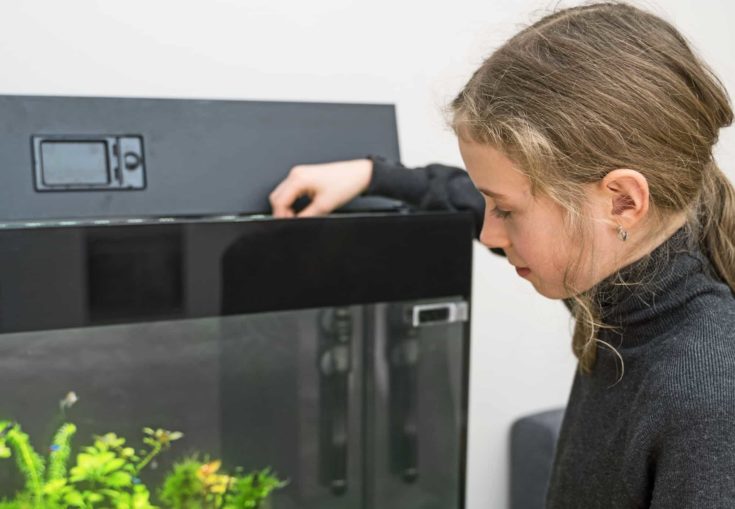
Eels only need to be fed twice a week, and some specimens may not accept food that’s offered to them that often. So, don’t panic if your eels only take food once every two to three weeks.
If you’re not at home or up and about at the ideal feeding times for your eels, it’s well worth investing in an automatic fish feeder with a timer. Simply load the feeder’s hopper with a small portion of food and set the timer to deliver the food at a predetermined time.
Tank Requirements
Freshwater aquarium eels are relatively straightforward to look after, as long as you provide them with the correct living conditions.
Tank Size
Aquarium eels vary in size, but we don’t recommend keeping any species of eel in a tank of fewer than 35 gallons.
As a good rule of thumb, you should allow 10 gallons of water per one 15-inch eel. So, a larger species of around 25 inches will need a bare minimum of 20 gallons of water to be comfortable.
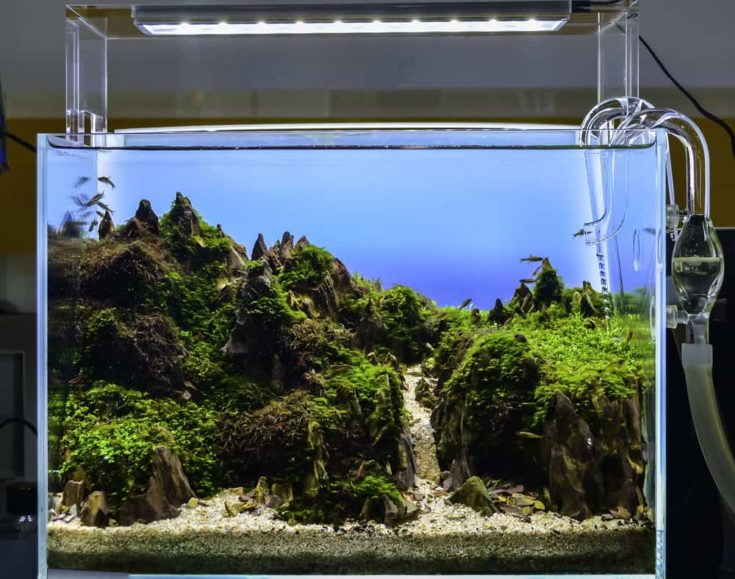
Some species of eels are accomplished jumpers, and virtually all are superb escape artists, squirming through the tiniest hole in the aquarium lid. For example, Swamp eels are able to jump and breathe air, too, crossing vast distances on land in nature. So, your living room carpet holds no fears for them!
Tank Setup
As with any fish species, your eels will do best if you keep them in a tank that mimics their natural environment as closely as possible. In the case of aquarium eels, these creatures are found throughout the world in many different habitats, including temperate and tropical climates.
Again, before buying an aquarium eel, research its habitat carefully and replicate that in your aquarium.
Substrate
The substrate that suits your choice of eel best will depend on where your eel comes from. If you choose a burrowing species, you should use a soft, sandy substrate or peat. Most eels are naked or have only very small scales to protect their bodies, so a soft substrate is a must.
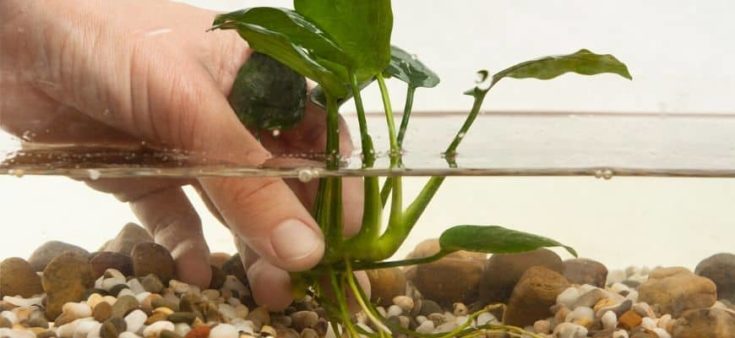
Decorations
Eels are bottom dwellers, and most species appreciate having somewhere to hide. So, you should include caves, rocks, overhangs, twisted roots, and driftwood in your setup. You can also include a piece of plastic or terracotta piping that the eels will use as a hiding place.
Again, to replicate the eels’ natural well-vegetated environment, dense, heavy planting is the way to go. Java fern, American Eelgrass, and Elodea are all good species to use, and you should include some floating plants that will help diffuse the lighting in the aquarium.
During periods of activity, eels do appreciate plenty of space to swim, so don’t clutter the tank with too much décor.
Habitat Requirements
Filtration
Eels typically inhabit slow-moving waters with very heavy vegetation where the animals spend much of their time hiding or hunting. For that reason, the flow in the tank should be slow to moderate. However, eels do create a fair amount of waste, so you need a very efficient filtration system to keep the water clean and sanitary. If necessary, buffer the flow using plants or rockwork.
Water Parameters
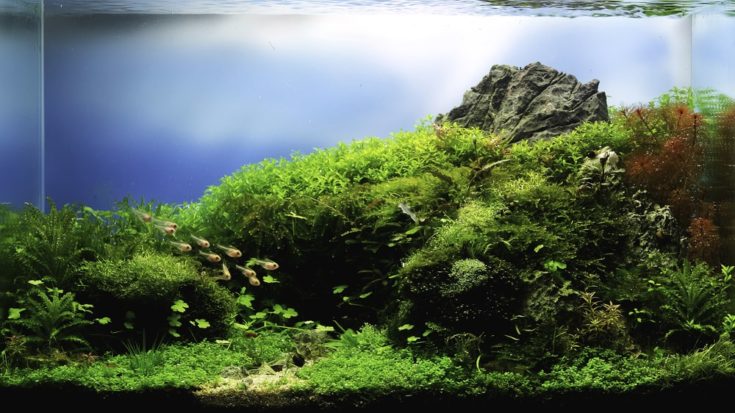
Eels come from many different regions and climates, so you must carefully research the individual requirements of the species you’ve chosen before you set up the tank.
Water Temperature
Most popular freshwater aquarium eels are tropical animals that need a water temperature of between 72° to 82° Fahrenheit.
Water Hardness And pH Range
Water hardness of between 5 and 15 dKH with a pH in the range of 6.5 to 7.5 suits most eel species.
Lighting
Regardless of what eel species you’ve chosen, all need low lighting to feel comfortable and safe. If the lighting in the aquarium is too bright, you most likely won’t see much of your eel, as it will be hiding away until the lights go out at night.
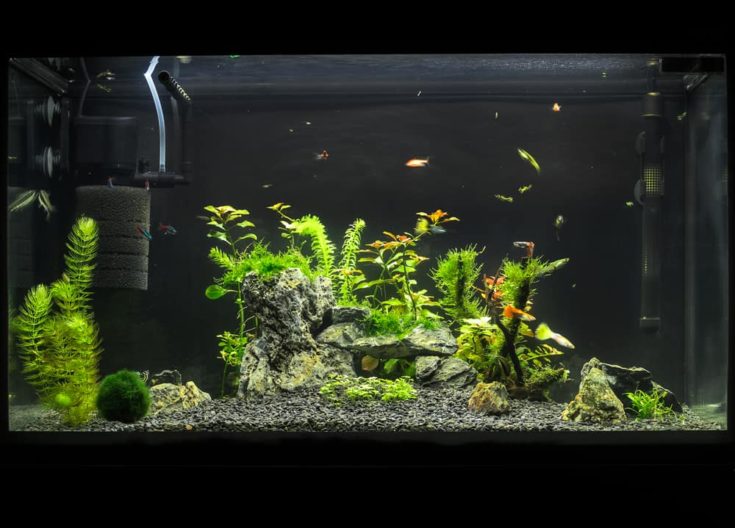
Use a raft of floating plants to diffuse and dim the light, but remember that many eel species are able to breathe air, so leave part of the water surface unobstructed for that purpose.
Tank Maintenance
Once you have the water conditions and tank environment set up correctly, freshwater eels are pretty straightforward to look after. That being said, you do need to keep the tank clean with well-oxygenated water.
Vacuum The Substrate
Eels produce a lot of waste, so it’s essential that you vacuum the aquarium to clean away uneaten food, waste, and decomposing plant material. As well as cleaning the substrate, pay attention to the areas around plant bases, underneath decorations, and in the corners of the tank.
Keep your plants tidy and prevent overgrowth by trimming off dead leaves and stems.
Carry Out Partial Water Changes
As well as vacuuming the tank, you should carry out 30% bi-weekly partial water changes to keep ammonia, nitrate, and nitrates at acceptable levels. Ideally, ammonia and nitrite levels should be zero, and you want no more than 20ppm nitrates in the water.
Maintain Filter Cartridges/Filter Media
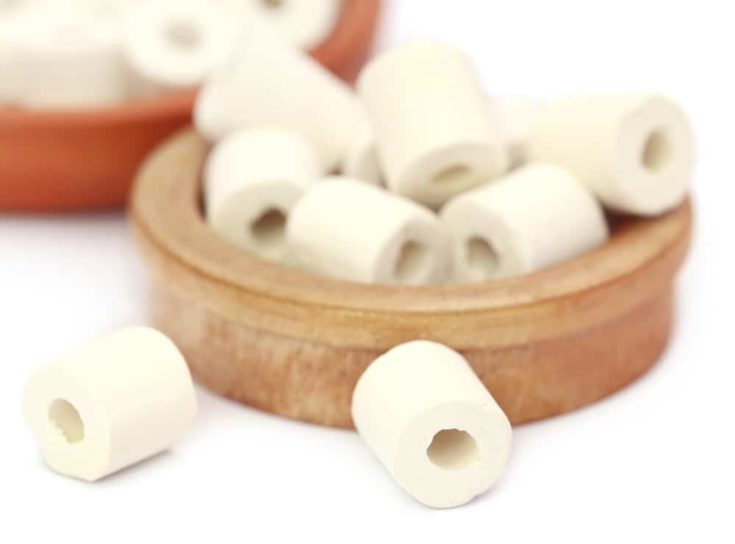
Your filter will only properly work if it’s free from sludge so that the water can flow freely over the media. So, wash the filter media in tank water once a month or so, and replace spent media and filter cartridges when required.
Setting Up The Aquarium
Start by assembling everything that you need for your eel aquarium:
- Soft, sandy substrate
- Lighting unit
- Filtration system
- Heater
- Aquarium thermometer
- Rocks, twisted roots, driftwood, resin caves, plastic or terracotta pipe
- Plants
How to set up your tank:
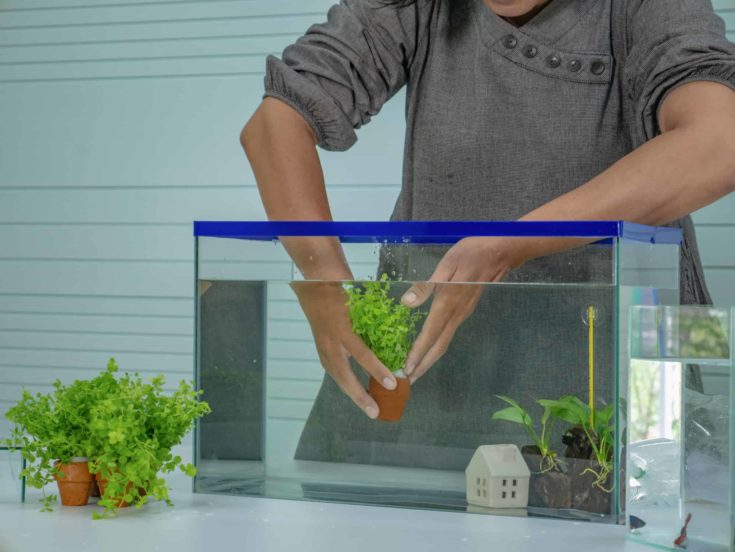
- Clean the aquarium substrate under running water to get rid of dust and loose debris.
- When the water runs clear, put the substrate into your aquarium to a depth of at least 3 inches, more if your eel is a burrower.
- Set up and fit your filtration unit and heater in the tank, but don’t switch them on yet.
- Next, fill your tank with unconditioned tap water. Tap water contains ammonia that the bacteria in the biological filter media require to kick off the nitrogen cycle before you introduce your fish, so don’t add conditioner to it this time.
- Put an upturned bowl on the substrate and pour the water over that so that you don’t disturb the substrate.
- Wash your tank decorations to remove dust, and arrange them in your aquarium.
- Snip off any damaged leaves and dead stems from your live plants and then plant them in your tank. Leave enough space between the plants so that they have room to grow and spread.
- Switch on your heater and filter, and leave the aquarium to cycle for at least ten days before you introduce your eels. Before adding your livestock, I recommend that you test the tank water to make sure that the levels of ammonia, nitrite, and nitrates are acceptable.
Health And Disease
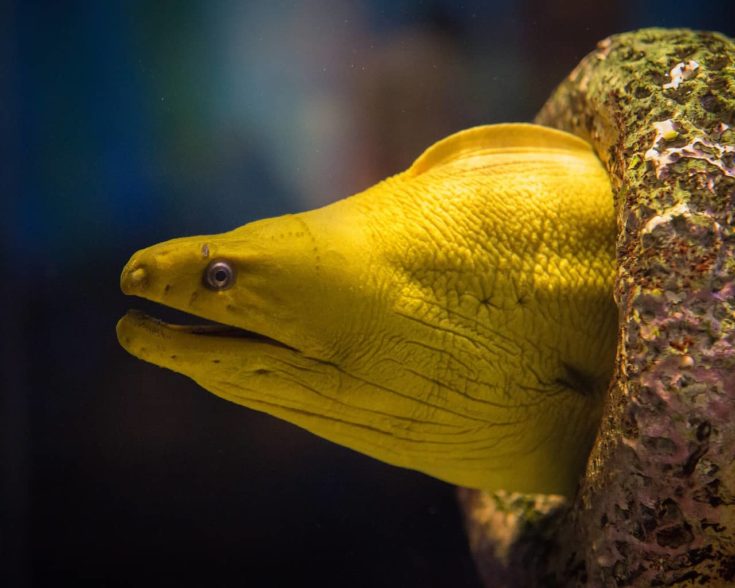
Freshwater eels are prone to many common fish diseases, parasites, and fungus, largely because they are scaleless. However, providing excellent water quality is by far the best way to prevent disease outbreaks in an eel tank.
Signs Of Good Health
It can be tricky to tell if your eel is unwell, as they spend so much of their time idling in hiding places or lurking amongst the planting.
However, eels do indulge in open water swimming once they’ve settled into their new home.
Red Flags
Red flags that could indicate that health problems may be brewing include:
- Poor appetite
- Lethargy
- Swellings and ulcers
- Flicking or rubbing against substrate and tank decorations
Common Health Issues And Treatment
Health Issue
Ich (White Spot Disease)
Symptoms or Causes
Ich is the most common disease in aquarium-kept fish and eels. The disease is caused by a protozoan parasite, Ichthyophthirius multifiliis. Ich usually appears as a telltale sprinkling of tiny white spots across the eel’s body. Animals with Ich rub or flick against solid surfaces in the tank.
Suggested Action
Elevate the water temperature to 82o F for three days, and use an over-the-counter Ich treatment.
Health Issue
Fungal infections (gill rot, branchio-nephritis)
Symptoms or Causes
White cottony growths.
Suggested Action
Quarantine the eel if in a community setup, and treat the tank with antifungal treatment.
Health Issue
Bacterial infections
Symptoms or Causes
Ulceration and red patches on the eel’s skin, tumors under the jaw (Cauliflower disease)
Suggested Action
Quarantine the eel if in a community setup, and treat the tank with antibacterial treatment.
Breeding
Not much is known about the reproduction of freshwater eels, and, at the time of writing, they are not widely bred in captivity.
That’s largely because the most popular aquarium eels available to hobbyists live in freshwater but spawn in the ocean.
Availability

Many species of freshwater eels are commonly seen in fish stores, and you can find most species available through online dealers.
The price of eels varies, depending on the rarity of the species and the size of the eel. For example, Tire Track eels can be bought for around $20, whereas Electric eels cost in excess of $300.
Product Recommendations
Fish tank (minimum size 35 gallons)
Filtration system
Aquarium thermometer
Water conditioner
Lighting unit
Selection of frozen foods
Soft, sandy substrate

Rocks, driftwood, twisted roots, caves
Books on keeping eels
A fishnet
Aquarium vacuum
Algae magnet
In Conclusion
There are many species of eels to consider, each with its own specific requirements, but I hope this guide gave you a clearer idea of what you’re taking on if you’re considering getting into keeping these fascinating creatures.
If you found this article helpful, please share it with your like-minded hobbyists, and tell us about your freshwater eel in the comments box below. We’d love to hear your story!
